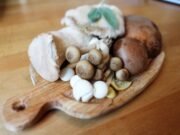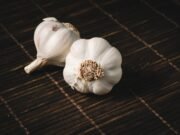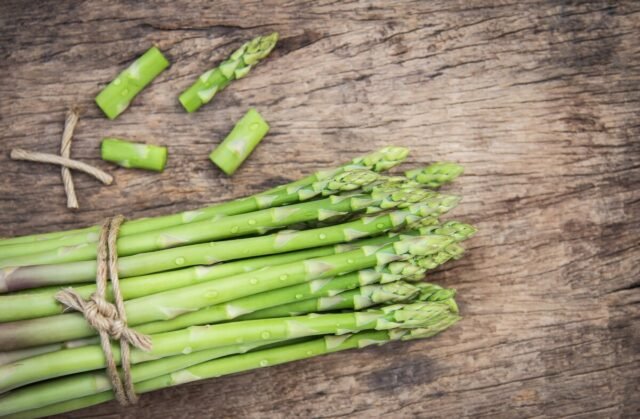Asparagus, a perennial vegetable belonging to the lily family, has captivated taste buds worldwide with its distinctive flavor and versatility in culinary applications. Its history dates back to ancient civilizations, with evidence of its cultivation in Greece, Rome, and Egypt. Today, asparagus is grown in various regions across the globe, with China, Peru, and the United States being the leading producers.
Asparagus is not only a culinary delight but also a nutritional powerhouse. It is an excellent source of vitamins A, C, and K, as well as folate, iron, and fiber. This verdant vegetable is low in calories and carbohydrates, making it an ideal choice for those seeking a healthy and balanced diet.
Culinary Versatility of Asparagus
Asparagus's culinary versatility is truly remarkable. Its tender spears can be enjoyed fresh, roasted, grilled, steamed, or sautéed. Asparagus pairs well with various ingredients, including eggs, cheese, bacon, and lemon. It can be incorporated into salads, pasta dishes, stir-fries, and even desserts.
Choosing the Perfect Planting Site for Asparagus Cultivation
Ideal Location for Asparagus Cultivation
Asparagus thrives in full sun exposure, receiving at least six hours of direct sunlight daily. It prefers well-drained soil with a pH between 6.0 and 7.0. Avoid planting asparagus in areas prone to flooding or waterlogging.
Preparing the Planting Site
Prior to planting asparagus, it is essential to prepare the planting site thoroughly. Begin by tilling the soil to a depth of 12-18 inches. Incorporate organic matter, such as compost or well-rotted manure, to improve soil structure and fertility. If necessary, adjust the soil pH to the desired range using agricultural lime or sulfur.
Raised Beds: An Alternative for Challenging Soil Conditions
For those with heavy or compacted soil conditions, raised beds offer an excellent solution. Raised beds provide better drainage and aeration, allowing asparagus roots to grow and spread more effectively. Additionally, raised beds make it easier to control soil temperature and moisture levels.
By following these guidelines, you can create an ideal environment for asparagus cultivation, ensuring a bountiful harvest of this delectable vegetable.
Planting and Establishing Your Asparagus Crop
Asparagus can be planted using either crowns or seeds. Crowns are the preferred method for home gardeners, as they are easier to handle and establish more quickly. Seeds, on the other hand, are less expensive and offer a wider variety of cultivars to choose from.
Planting Asparagus Crowns:
-
Spacing and Depth: Dig trenches 6-8 inches deep and 18-24 inches apart. Place the asparagus crowns in the trenches, spacing them 12-18 inches apart. Cover the crowns with soil, leaving the tips exposed.
-
Watering: Water the asparagus crowns thoroughly after planting. Keep the soil consistently moist, especially during the first year of growth.
Planting Asparagus Seeds:
-
Seed Selection: Choose asparagus seeds that are fresh and disease-free. Soak the seeds in warm water for 24 hours before planting to improve germination.
-
Germination: Sow the asparagus seeds 1 inch deep and 2 inches apart in a seedbed or container filled with well-drained potting mix. Keep the seedbed or container warm and moist until germination occurs.
-
Thinning Seedlings: Once the seedlings have developed their first set of true leaves, thin them to a spacing of 6-8 inches apart.
Caring for Your Asparagus Crop
Asparagus requires regular watering, especially during the first year of growth. Water deeply once or twice a week, or more frequently during hot and dry weather.
Fertilize asparagus annually in the spring with a balanced fertilizer, such as a 10-10-10 NPK fertilizer. Avoid over-fertilizing, as this can lead to excessive fern growth at the expense of spear production.
Mulching and Weed Control
Mulching around asparagus plants helps to suppress weeds, retain moisture, and regulate soil temperature. Use organic mulch, such as straw, compost, or wood chips, to a depth of 2-3 inches.
Keep the asparagus bed free of weeds, as they can compete with the asparagus plants for water and nutrients. Hand-weeding or using a hoe are effective methods for weed control.
Common Pests and Diseases
Asparagus is susceptible to a few common pests and diseases, including asparagus beetles, aphids, and rust.
-
Asparagus Beetles: These beetles can be controlled by hand-picking or using insecticidal soap.
-
Aphids: Aphids can be controlled by spraying the plants with a strong stream of water or using insecticidal soap.
-
Rust: Rust is a fungal disease that can be prevented by avoiding overhead watering and providing good air circulation.
Harvesting and Preserving Asparagus
Asparagus is a perennial vegetable that requires a two-year rotation. During the first year, the plants are allowed to grow and establish their root systems. Harvesting is not recommended during this time.
In the second year, the asparagus plants will produce spears that can be harvested. Continue harvesting for 6-8 weeks, or until the spears become thin and fibrous.
Harvesting Asparagus Spears
-
Ideal Time to Harvest: The ideal time to harvest asparagus spears is when they are 6-8 inches long and the tips are tightly closed.
-
Harvesting Technique: Cut the spears at the base using a sharp knife or asparagus knife. Avoid pulling the spears, as this can damage the plant.
-
Proper Length of Spears: Cut the spears to a length of 6-8 inches, leaving at least 6 inches of the spear above the ground.
Preserving Asparagus
Asparagus can be preserved for extended enjoyment using various methods, including freezing, canning, and dehydration.
-
Freezing: Asparagus can be frozen for up to 1 year. Blanch the spears for 2-3 minutes before freezing.
-
Canning: Asparagus can be canned for up to 1 year. Follow a reputable canning recipe to ensure safe and proper preservation.
-
Dehydration: Asparagus can be dehydrated for up to 6 months. Dehydrate the spears at a temperature of 110-120°F until they are brittle.































